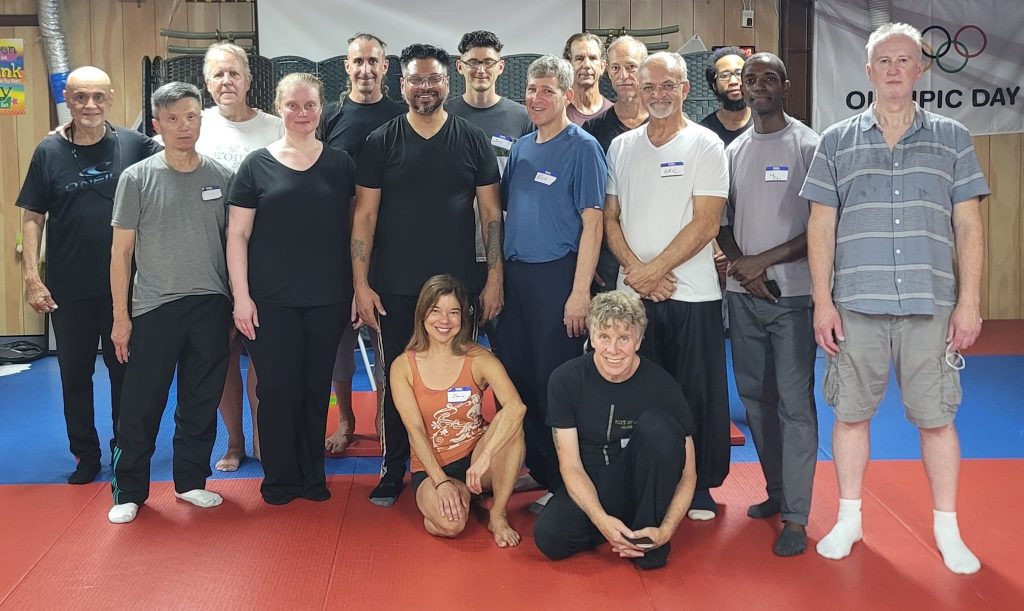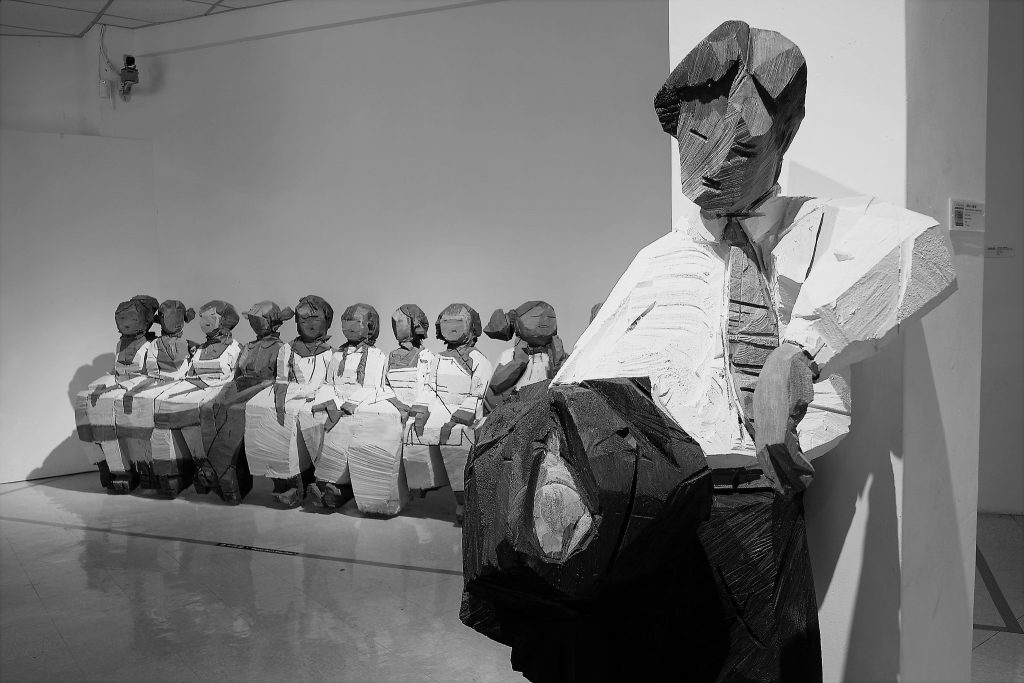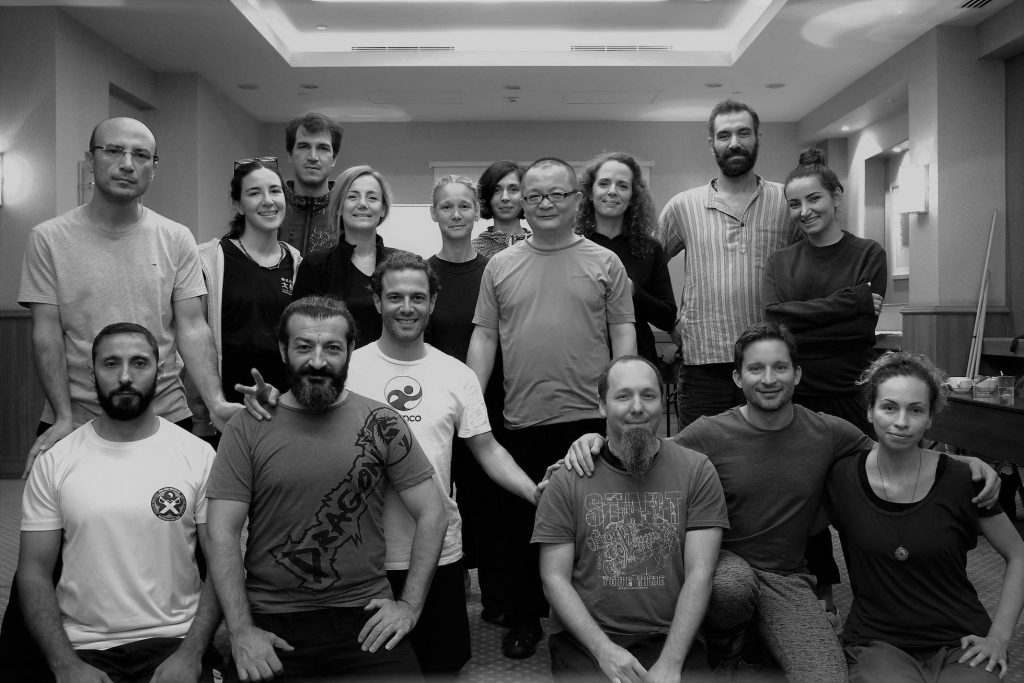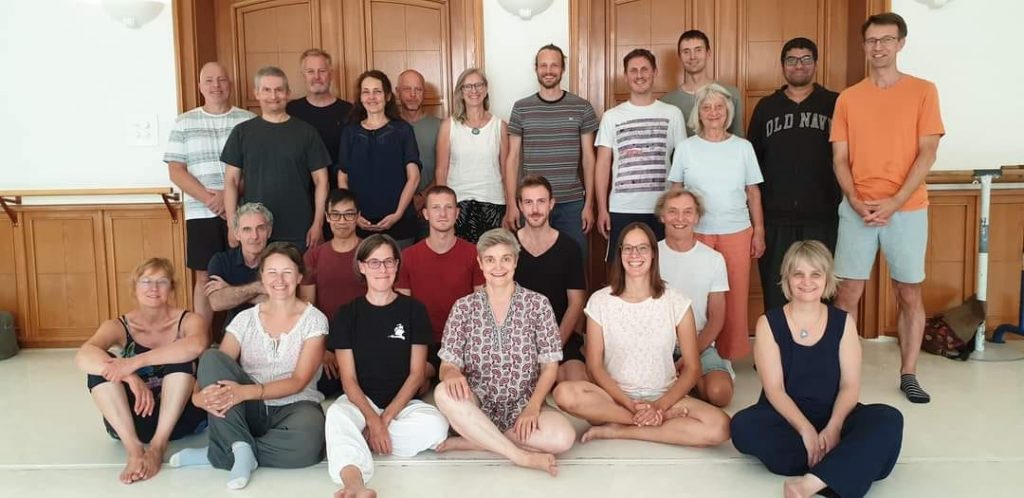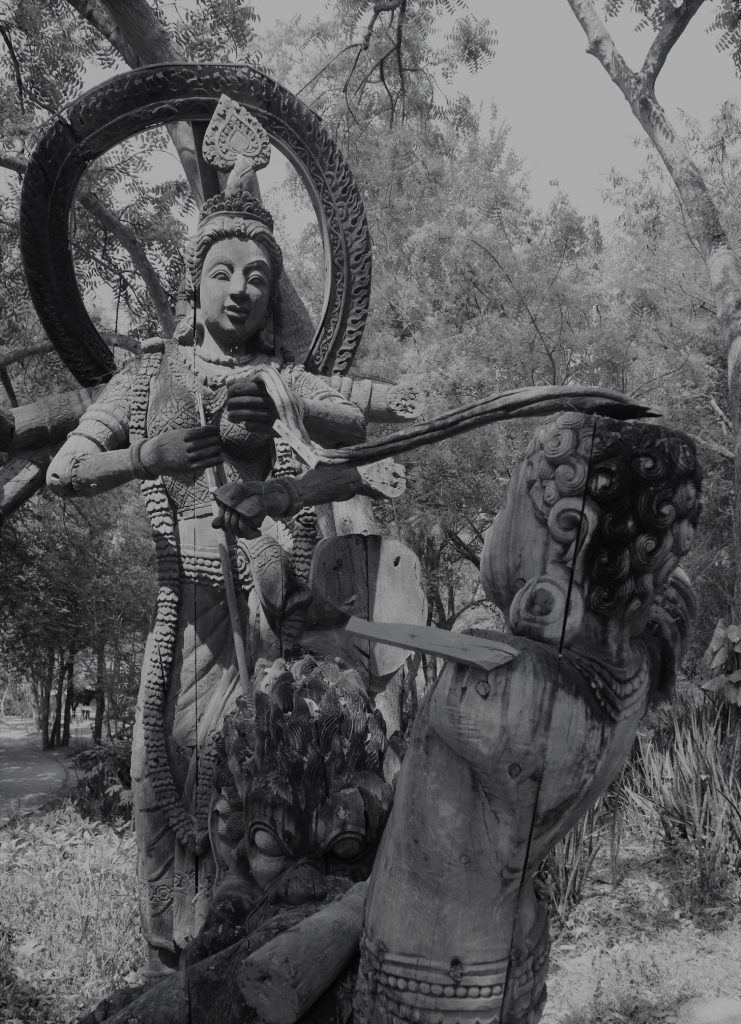Post by Eimhin David Callanan on Facebook
Dear Huai Hsiang Wang,
Recently I have heard some more of your rendition of the fundamental nature of substantial existence as per the wuji, taiji t’u, taiji, and manifest reality model put forward by Lao Tzu in the Tao Te Ching.
This subject matter has fascinated me from an early age when I came across the model as put forward by Pythagoras in ancient Greece. The Pythagorean brotherhood used a symbol called the ‘Tetractys’ , and wore this as a pendant round their necks, a triangle formed of 10 dots (tetra: 10 , the perfect number of the Pythagoreans). 1 dot, then 2, then 3, then four, to symbolize Unity, Duality, Creative Trinity, and Manifest Reality as four the number of the Square.
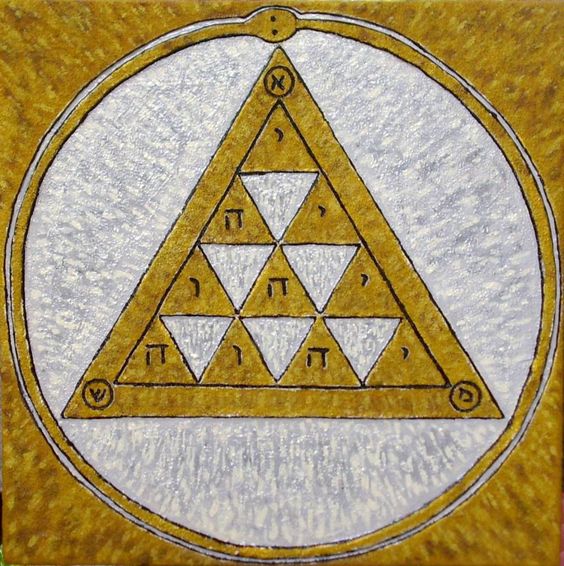
In this model, the creative trinity is equivalent to the logos, and the golden ratio, where the lesser is to the greater as the greater is the whole, namely the creative harmony of a duality, and the only two-term proportion in existence where a:b::b:(a+b)
On a personal note, and in the classical Daoist sense of reversion or going back, I should acknowledge that I understand that, on my way, I began in the Western mind looking as from without, toward an objectified principle that in your description is pure subjective phenomena. Please allow me this accident of circumstance. I have some internal practice by now and hope to arrive at the latter someday.
Coming across the Tao Te Ching in my late teens I immediately noticed the parallel with the lines: “Within the Dao, there was the One, from the One came Two, from Two came Three and from Three came the ten thousand things.” From my outer perspective, only dimly aware, all I could see was the patterned likeness. I went on to discover this patterned likeness in a variety of other places.
The ancient language of Croatia, pre-cyrillic (Cyrillic is to Russian as Latin is to English), was called Galgolicja, it was alpha-numeric meaning the numbers and letters were self-similar in sequence, such that 1,2,3,4 was equivalent with A,B,V,G, the first four letters of the language. In Glagolicjian the language had a story where each successive word began with each successive letter of the alphabet. The first four words of this story are: AZ BUKI VEIDEI GLAGOLICJA translating to: I Can See the Word.
This brings up both the Christian tradition : “In the beginning there was the Word and the Word was made Flesh.” and the Hindu tradition in the sense both of the Om, as the seed syllable, and both the micro and macro of the fractalitic self-similar vibratory totality of creation; and also, the foundational Hindu story where Brahma, the eternal unmanifest (Dao), draws a circle around itself (wuji), takes a piece from inside and places it outside the circle which becomes Vishnu (taiji t’u), Vishnu ‘looks’ (veidei is the root of ‘to see’) at Brahma and this act forms Shiva (taiji), establishing all creation and destruction.
I found the pattern also at the root of the Berber language of northern Morrocco, also alpha-numeric, and following this exact pattern but in a visual sense that is not easily explained without being able to draw, but I will add a picture below. The pattern is in tact with even the symbol of phi being the third term where the symbol phi ( a circle with a line through the middle extending above and below the circle) is the mathematical symbol of the golden ratio cited above, and observed in the geometric growth sequence of much of mineral and biological life.
The pattern is again to be found in the axiomatic foundation of complexity theory as per: “Period three implies chaos” where periodic systems are observed as periods of stability until the third period where each part of the system ‘bifurcates’ repeating the original systemic evolution within each particle of the initial system. To illustrate, imagine a smoke ring, it is initially perfect, then it wobbles slightly, then it twists and wobbles more but a circle is still almost discernable, and then chaos, every part of the initial formation dissipates into space.
I felt in hearing you speak that you may be interested, if not mildly entertained by these objective manifestations of the subjective principle you embody and teach, and felt like sharing these.
Any comment is welcome. I hope to one day meet you in Ireland.
Perhaps in the countryside for some days training if this would be something interesting to you.
Thank you for sharing your experience and teaching others.
I am glad to have the benefit of learning from a fellow Taiwanese Master of yours, based in the US, Master Waysun Liao.
Response by Huai Hsiang Wang
Dear Eimhin David Callanan,
The spiritual eminence is in trinity, whereas the human mind functions in duality.
Therefore, spiritual subjectivity can only be comprehended by the human mind in the form of metaphor, based on the intrinsic conceptual separation of subject and object.
However, it does not matter how hard the shadow tries; the shadow can not become the substance.
Likewise, I have been fascinated by the similarities of different spiritual traditions since I was a teenager; however, it took me many years to realize that they are not coincidental.
If one holds conceptual knowledge in awe without being able to digest/validate the imparted knowledge, one will remain bound by the mind and lost in awe in conceptual speculation as an individual.
The key message of the similarities is to remind oneself throughout history: “Thus as You Are.”
There is a huge gap between knowing and seeing from within oneself: the human dilemma!
The mind, which is energy functioning, is the blocking factor.
Freed from the dominance of the mind, one is the vital energy with the veiling of the animated sentience, Prana in Dynamics.
Equalizing the two polarities of the vital energy in vibration, one is the universal Consciousness in creation.
Devoid of the Consciousness in temporality, one is the Light in eminence.
Beyond the Light, Nothing is everything.
In peace,
Huai Hsiang Wang
